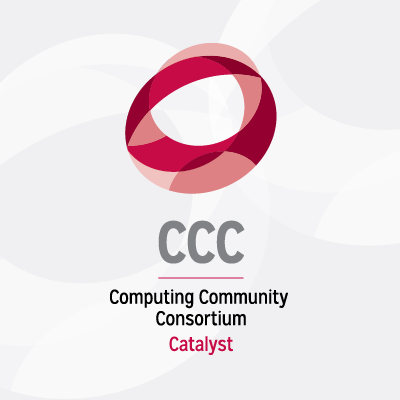
A recent CCC Computing Futures Symposium panel, featuring luminaries in the field — Robin Murphy (Texas A&M University), Melanie Moses (University of New Mexico), Chad Jenkins (University of Michigan), and Holly Yanco (University of Massachusetts – Lowell) — offered a captivating glimpse into the evolving landscape of robotics and autonomy. Moderated by Weisong Shi (University of Delaware), the discussion highlighted pivotal advancements in sensing, computation, and intelligence, exploring their profound implications for society, research, and education.
Charting the Present and Future of Robotics
The panelists began by painting a vivid picture of the current state and future potential of robotics. Murphy, a pioneer in rescue robots, challenged conventional notions of disaster response, demonstrating how AI-powered analysis of drone imagery can drastically cut down response times from days to mere minutes. Moses captivated the audience with examples of robot swarms inspired by ant foraging behavior, emphasizing the fun and hands-on learning robotics provides, while also showcasing their critical role in dangerous environments like active volcanoes. Jenkins drew a parallel between the early days of personal computing and the nascent stage of humanoid robots, envisioning a future where dexterous robots perform complex tasks like preparing breakfast or assembling furniture. Yanco, focusing on human-robot interaction (HRI), asserted that all of robotics is, in essence, HRI, advocating for more capable robots that understand and adapt to human needs, particularly in cluttered home environments or for assistive technologies.
A central theme emerged as the discussion shifted to the trajectory of robotics over the next five to ten years: are we on the right path? The consensus leaned towards “yes, but with caveats.” Murphy, referencing the “wild robot” concept, underscored the inherent difficulty of deploying robots in unpredictable real-world scenarios. She highlighted the lack of standardized testing methods, which hinders comparison and progress across diverse robotic platforms and applications. Moses stressed the critical need for interdisciplinary thinking, advocating for deeper collaboration with social scientists, architects, and other domain experts to ensure robots are effectively integrated into human environments and society.
Challenges and Opportunities
The conversation then delved into the challenges and opportunities for accelerating both research and real-world deployment. Jenkins emphasized the need for a “thousand flowers to bloom” approach, fostering diverse ideas and encouraging collaboration between industry and academia to solve real-world problems. Yanco made a compelling case for overhauling robotics education, suggesting that every computer science student should be issued a robot to foster hands-on learning and a deeper understanding of embodied AI. Jenkins further elaborated on the importance of re-evaluating mathematics curricula, advocating for earlier introduction of linear algebra and more integrated approaches to calculus to make these foundational subjects more relevant to AI and robotics.
The panel also grappled with the often-contentious role of government agencies and regulation. Murphy lamented the slow pace of regulatory approval in disaster response, citing FEMA’s continued reluctance to embrace drone technology despite its proven efficacy. Moses suggested that the issue isn’t regulation itself, but rather the way we regulate. She pointed to countries like China, Japan, and South Korea, which have implemented regulatory incentives that foster innovation. Jenkins noted the common public sentiment of “where’s my robot?” indicating a desire for more accessible and impactful robotic applications in daily life, underscoring the need for greater support and engagement between diverse stakeholders.
Ethical and Societal Implications
Finally, the discussion touched upon the profound ethical and societal implications of increasingly agentic AI and robotics, particularly in areas like warfare and elder care. The panelists acknowledged the potential for both positive and negative societal shifts, emphasizing the urgent need for multidisciplinary conversations involving economists, historians, legal scholars, and ethicists. The panel highlighted the challenges of providing care for aging populations, citing the organizational, funding, and user-acceptance hurdles.
The panelist’s insights underscored the exciting yet complex journey ahead as we continue to push the boundaries of what robots and autonomous systems can achieve. Wish you could see the panelists in action? Stay tuned for the full panel video recordings, which will be released soon!









